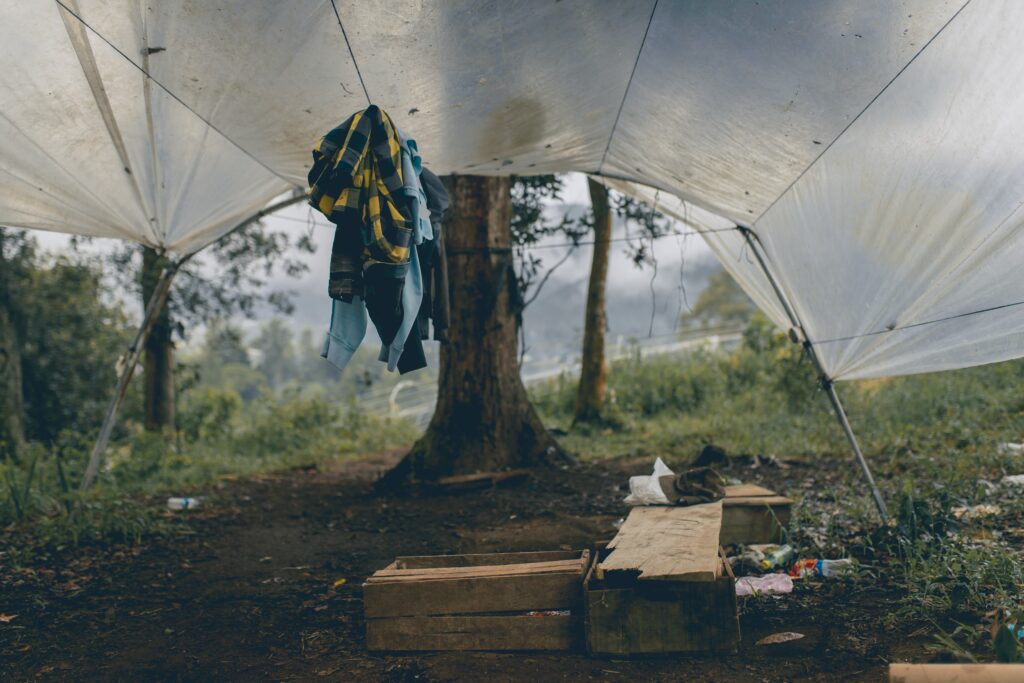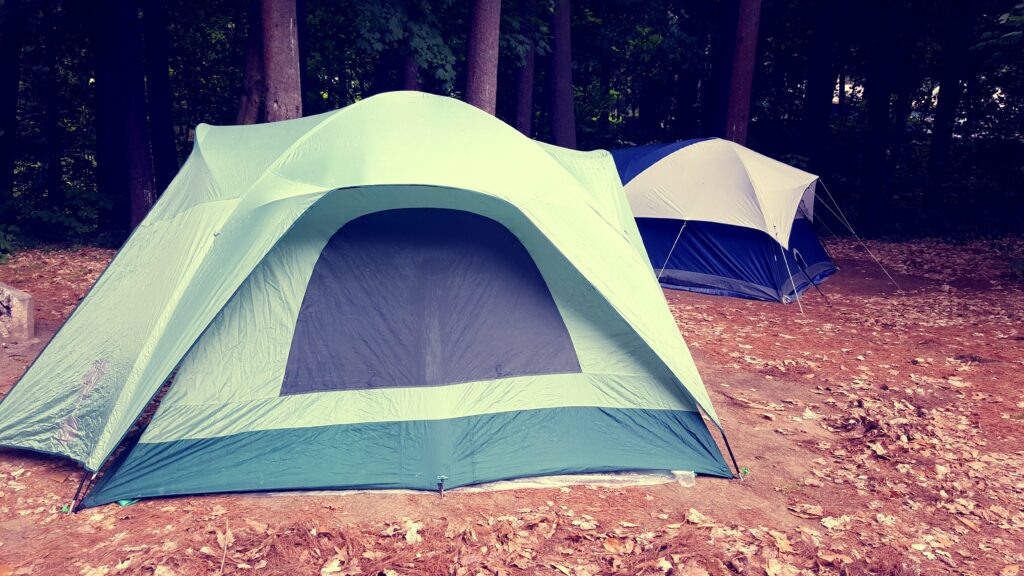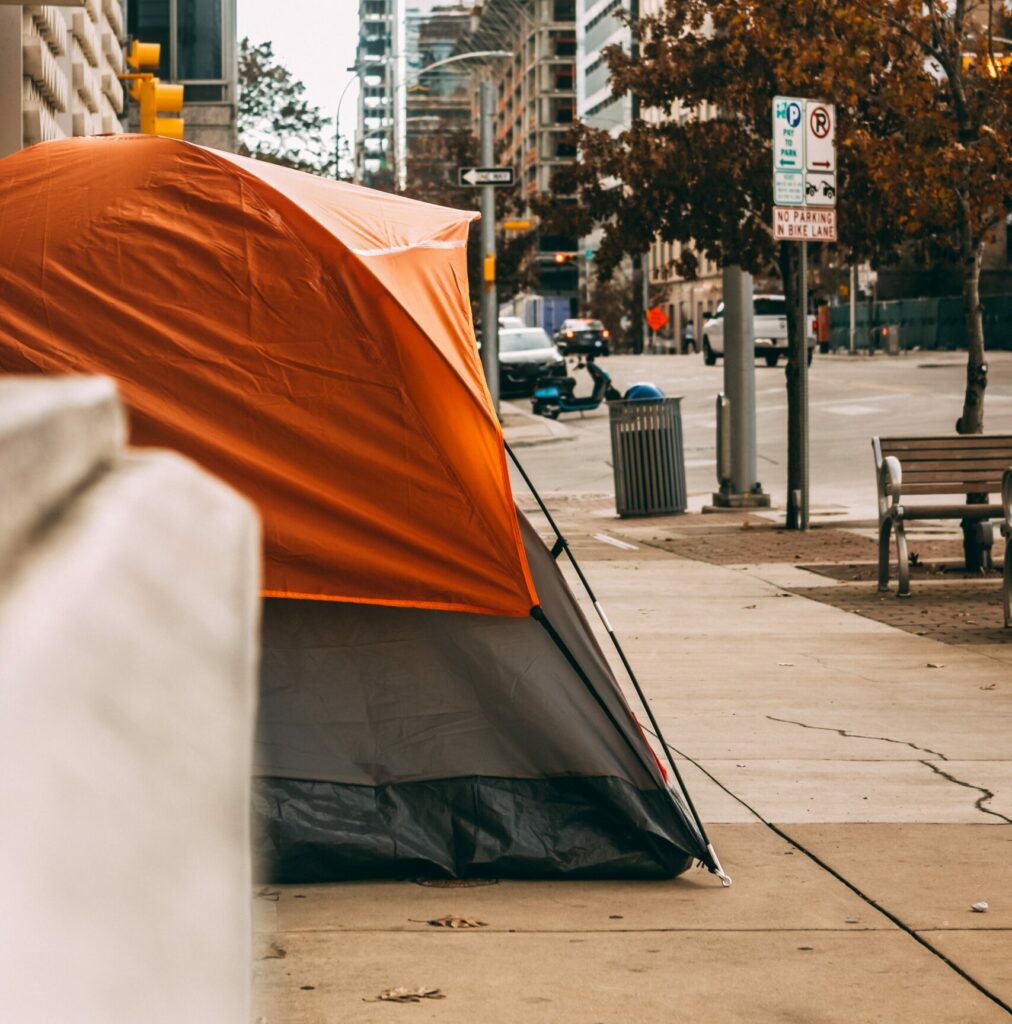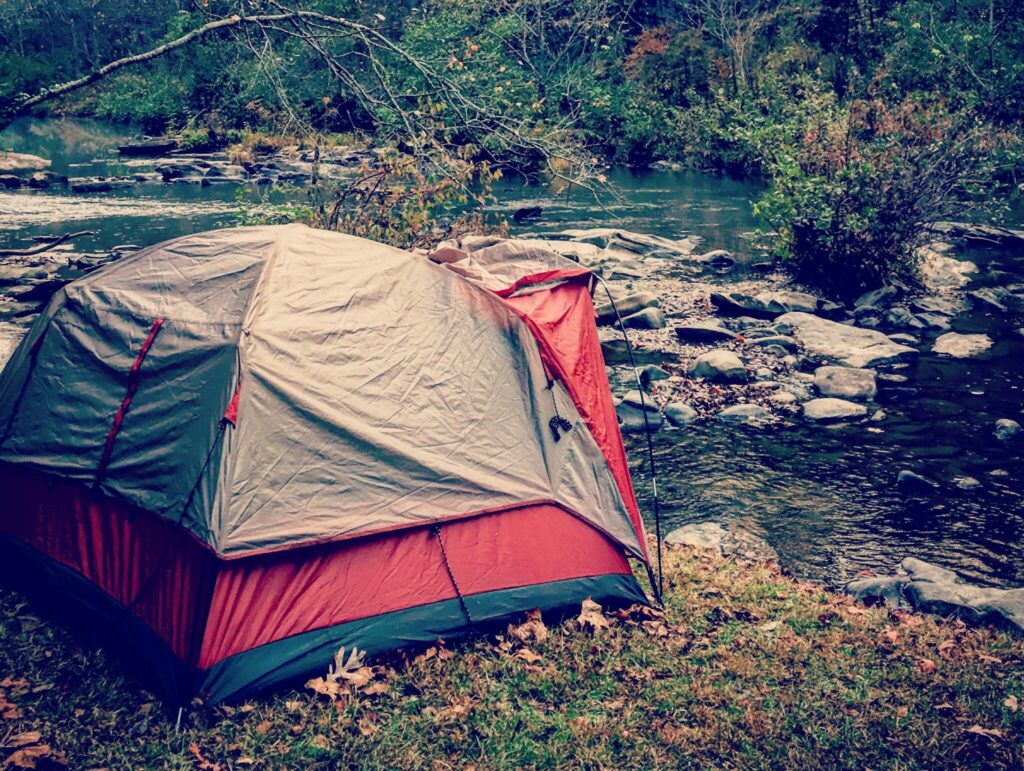Guest opinions: Point, counterpoint on sanctioned encampments

Wednesday, April 19, 2023
On March 6, Boulder city councilman Bob Yates sent out his monthly newsletter, Boulder Bulletin. The topic was homelessness; specifically, the city’s policy of giving three-day’s notice before removing encampments of unhoused residents.
We published Part 1 of these point/counterpoint guest opinion pieces last week: Read it here. This is Part 2, covering sanctioned encampments.
Although a relatively new intervention, sanctioned encampments have proven popular and successful in Denver. Results elsewhere have been mixed, as you’ll read below.
Locally, momentum is gaining for sanctioned encampments, with the Boulder Chamber recently considering backing a pilot camp. City staff and some elected officials remain resistant.
We hope this point/counterpoint style opinion piece helps capture and distill the debate for you. As we wrote before, this is a new way of doing things. You may have strong feelings about it. If so, let us know.
Thanks for reading.
Three Days by Bob Yates (read the original, un-annotated version)
A Response by William Sweeney (Sweeney’s comments are italicized and marked with —>)
BY: I’d like to address a somewhat related proposal respecting homeless camping that I frequently hear from members of the community and from some of my council colleagues: They logically suggest that perhaps Boulder should set up a “sanctioned” campground somewhere in town, where all would-be campers could be directed, freeing up the city to truly enforce its camping ban everywhere else. Such a city-operated campground could have toilets and showers, and maybe even food and clothing distribution, not unlike what is already offered at the Boulder Shelter on North Broadway.
While this sounds nice in theory, it hasn’t worked well in practice for many of the cities in the U.S. that have tried sanctioned campgrounds. As observed by the U.S. Interagency Council on Homelessness, the federal agency that coordinates state homelessness policies, there have been several problems with city-sanctioned homeless campgrounds, including:
–> Let’s work to untangle what follows. Boulder’s programs have never had meaningfully stated outcome goals which can be measured. I assume there’s fear of the politics of failure. Boulder has never had a program that had a goal something like: The number of unsheltered persons camping in Boulder shall be reduced by 100 persons in the first year and in each year thereafter. If the number of unsheltered persons camping in Boulder rises above 50 in any successor year, then the reduction target for each successor year shall be sufficient to reduce the number to 50 or less.
Now, let’s think about how that might play out and what might be possible to envision.
1.) Optics vs. reality: Creating sanctioned campgrounds may look and feel on the surface like action to end homelessness, but in fact such campgrounds have very little impact on reducing homelessness. Many cities that have experimented with sanctioned campgrounds have found that, rather than reducing illegal camping in other parts of their towns, illegal camping in their cities actually increases. Word gets out that the city is friendly to campers and people flock to that town to set up tents, sometimes in the sanctioned campground, often not. Indeed, many of these cities have abandoned or sharply curtailed their experiments with sanctioned campgrounds, including Seattle, Ontario, San Diego, Colorado Springs, and Fort Collins. Even Denver, which boasts of its success with sanctioned campgrounds, still has a massive illegal encampment problem that dwarfs Boulder’s.
Those sanctioned campgrounds might help a small handful of homeless people to transition to permanent housing but, in parallel, unsanctioned camping continues and often increases.
—> Doing anything at all will not end homelessness. Homelessness is a feature of capitalism as we practice it. It is quite possible to design systems which will provide that homelessness will be rare, brief, and a non-recurring. Doing anything that is not intended and resourced to reduce homelessness will only perpetuate and expand homelessness. How does a program reduce homelessness? By providing housing.
The USICH and the White House in the 2023 plan “All In” sets a national goal to house 25% of the homeless population by 2025. Among the strategies is the recognition of the severity of the housing crisis:
Nationally, there are only 37 affordable and available rental homes for every 100 extremely low-income renters. In no state can a person working full-time at the federal minimum wage afford a two-bedroom apartment at the fair market rent.
The referenced camping programs are of differing designs, in differing eras, and in differing economic conditions. To take one example, Safe Outdoor Spaces (SOS), in Denver, provide a supervised campground with all the services of a homeless shelter. In Denver, the shelter beds are all full and the number of people who are unsheltered (and encamped) are estimated to be about 1.5 times as many as the filled beds. The number is closer to 2 times if one adds in people who are resident in vehicles. SOS is a pilot program (renewed last week by Denver’s Council) and it provides only as many beds as about 15% of the shelter beds.
Unsanctioned camping continues and often increases because persons continue to become homeless. The tens of thousands of affordable and supportive housing units needed statewide make this a problem for every jurisdiction.
Proposition 123 was adopted by statewide vote and created the State Affordable Housing Fund (SAHF) to dedicate one-tenth of one percent (0.1%) of state income tax revenue to fund affordable housing programs and projects. Denver and Aurora are announcing large-scale service and housing programs, which may be scaled close to making a difference. They are designing and scaling their programs with the intention of achieving goals that make a difference.
We need to get people housed and keep people housed. Then we can reduce the size of the unhoused community to its lowest scale: interim housing programs (shelters and the like) should be scaled to house those who become homeless (or return to homelessness) within (say) 30 days PLUS those who are waiting for opportunities to open in long-term programs (eldercare, rehab, job training, and the like) PLUS those who are not prepared to enter housing or other programming while in crisis.

2.) Diversion of resources: Sanctioned campgrounds are highly costly in money, staff time and effort, diverting resources from other work helping those who truly want to exit homelessness. Last year, Denver spent $3.9 million to set up a sanctioned campground that would temporarily house up to 370 people, a cost of more than $10,000 per camper. Denver acknowledged that very few of those people in the sanctioned campsite would likely end up in more stable housing. (Editor’s note: The same day Yates’ newsletter was released, Westword reported that 180 people had moved on to stable housing from sanctioned encampments.)
Last fall, the Portland city council authorized an expenditure of $27 million to create three sanctioned campgrounds that would house up to 250 people each, at a cost of more than $36,000 per camper. In L.A., the annual cost of a sanctioned campground (since closed) was about $31,000 per camper. Boulder city staff estimates that operating a sanctioned campground here would cost about $24,000 per camper per year, more than it would cost to house the person in an apartment with supportive services.
—> In Boulder, city staff has made reference to a number reported in a study a few years ago when things were cheaper. The community cost to support an unhoused person was around $40,000 to $45,000 – now it’s probably somewhat higher. Our population is older and sicker. A similar study in Denver pegged the community cost at above $50,000 before the pandemic.
Why do we not make the rational choice to house the person in an apartment with supportive services for less than $24,000? Why do we spend $3 million per year on a half- dozen programs that oppress people but do not reduce homelessness? Simple: because there are no affordable houses available! If there were, that $3 million spent on oppression would apparently house about 120 people.
Consider that in light of the city estimate of 100 to 150 encamped. The goal of keeping the unhoused population at its lowest levels would be much closer to achievement.

3.) Conditions: Sanctioned campgrounds are difficult to manage and to keep safe and
clean. A sanctioned campground — like a homeless shelter — must have some basic rules, like prohibitions on violence, theft, and drug-dealing. Otherwise, you’d have a real Mad Max chaos zone. Resistance to such basic rules is one of the reasons that some people won’t go to a brick-and-mortar homeless shelter in the first place. Such folks are probably no more inclined to abide by similar rules in a sanctioned campground. In Ontario, California, the city opened a sanctioned campground that ballooned from a planned encampment of 20 people to more than 400 folks, with two-thirds of the population coming from outside of the city and high levels of crime and disruption. The city revised the campground rules to allow only community members, to disallow pets, and to prohibit public consumption of drugs or alcohol, with a 10 p.m. curfew. That didn’t work either, and the campsite eventually closed.
—> “Sanctioned Campground” has had many meanings in the last decade or so. The
horror stories relate to other forms of campsites, often just bare land and porta-potties without programming or supervision.
For our purposes, it is probably best understood as having all the properties and programs of a fixed-wall shelter except two: it has a rapid scale-up and scale-down property, and it has provider-owned tents or tiny homes instead of dormitories and dining halls. “Safe Parking” has the same properties, except that it has client-owned vehicles instead of dormitories and dining halls.
The budget for this form of shelter is comparable to a fixed-wall shelter with the same program offerings, except for the building capital, maintenance and operating costs. The primary reason to adopt these strategies is to provide capacity (which we lack) without lengthy and expensive start up and without trapping capital when capacity needs recede.
Programming might include intake, navigation, severe weather shelter and basic
needs including food, clothing and medical and mental health access. Funding would
be easy if we divert the funding for oppression. The impact on unsanctioned camping would be direct.
There are lots of other successful models with other program designs: for example, long-term, alternative, independent residence, or occupancy only by seasonal work crews while employed. These are not on view here.

4.) Sustainability: Although typically proposed as temporary solutions, sanctioned
campgrounds are often difficult to close, once opened. In Oakland, it took a fire to
finally close a problematic sanctioned campground that had been open for two years.
—> Yes, unsupervised camps are difficult to close, especially when no alternative accommodation is present, which may make it illegal to do so. Camps on designed the model discussed above can be scaled down or closed as a matter of management action, so long as residents have a place to go.
In April 2021, our city’s Housing and Human Services staff — which is quite experienced in evaluating homelessness solutions that work and don’t work in other cities — recommended against opening a sanctioned campground in Boulder. City staff wrote, “With four to five individuals entering our community every day and a similar number leaving, there should not be an expectation that a sanctioned camp will significantly reduce camping within public spaces. Experience from other communities does not indicate that this would reduce the number of individuals camping in public spaces and could make Boulder more attractive in the national network for individuals experiencing homelessness, heightening pressures on community resources.”
—> There is not a robust program design for a sanctioned camp. Evaluating the words “sanctioned camp” is not a helpful form of dialogue. It might be more constructive to say: Boulder recognizes there will always be temporary homelessness, and that there must be support for persons who are unhoused. Boulder is committed to reduce the unhoused population to its lowest scale: the interim housing programs (shelters and the like) for those who become homeless (or return to homelessness) within (say) 30 days PLUS those who are waiting for opportunities to open in long-term programs PLUS those who are not prepared to enter housing or other programming while in crisis.
Therefore, let’s design a solution to effect this policy and to meet the goals “reduce unsanctioned camp sites by 50% in 12 months” and “navigate 50% of all entrants to a housed or long-term outcome in 30 days.”
Then we can work on issues like what does that look like, how soon can it open, how will it be funded and managed, how will utilities like water, sewer, power, wifi, and transportation be accessed, and other basic design elements. I imagine that city staff, working with the many in this community whose expertise has developed by living unsheltered or by serving the unhoused would be able to provide a good design.
I agree with city staff. I’m not sure that Boulder should go down the path of opening a sanctioned campground in someone’s neighborhood. We have 30 unused beds at the Boulder Shelter on an average night, with alternative arrangements made when the Shelter reaches maximum capacity. So, I struggle to understand the need to create a second “shelter” that is outdoors, with all of the costs and the negatives it would bring, and not many upsides, as other cities have discovered.
—> The is no need to struggle to understand that the Boulder Shelter does not have sufficient capacity to served Boulder’s unhoused residents (we have 30 empty beds and 150 campers), and that the Shelter is working as hard as it can, along with those tasked to oppress our unhoused residents, and none of them are reducing the encampments – or being asked to.
We need to change our policies from encampment-creating to encampment-reducing. That of course means we need to solve the problem that underlies it all: the lack of affordable housing.
I’ll try to keep an open mind on the possibility of Boulder opening a sanctioned campground, and someday I might be convinced to support one. But, I will also heed the advice given to me by the mayor of one of the cities that tried sanctioned camping: If you can afford a bricks and-mortar homeless shelter, don’t open a sanctioned campground; you’ll regret it.
—> Boulder has directed its budgets to emphasize enforcement, not housing. Our unhoused residents, like our housed residents, are a mix of individuals who are trying to survive despite their traumas and circumstances. Some have skill sets that can sustain their households when they are re-established. Boulder needs an entry-level work force. Some do not have the means to sustain their households without substantial support.
Houseless people need affordable housing. A smaller proportion need supportive housing which is funded, supervised and with supportive services. A larger proportion need the time and support to stabilize and build a housing plan, which includes an income plan. Many more have short term needs to re-engage with their roots or resume their interrupted lives. A few need a brief respite as they solve a short-term problem or move on to other goals.
Every unhoused person needs and depends on a certain level of community that can love and be trusted. We have chosen to shift our homeless-care resources to traumatizing, often expressing hate, and even speaking of cleansing. Let’s be known not as the city that rode to the Sand Creek Massacre, not as the city of the Klan, but as a city of mutual trust and respect.
Boulder Beat Opinion Panel members are writing in their own capacity. Their views do not necessarily reflect those of Boulder Beat. Got a different take? Write a Guest Opinion using our op-ed and comment guidelines or submit an application to join the Opinion Panel. Homelessness Opinion Bob Yates Boulder city council city of Boulder Denver encampments homelessness sanctioned encampments unhoused
Homelessness Opinion Bob Yates Boulder city council city of Boulder Denver encampments homelessness sanctioned encampments unhoused


I’m not sure Sweeney addressed the Yates comment stating there are 30 open beds at the shelter each night. This seems significant. Why is this? A stated goal may be to fill those 30 beds each night.
The above comment was posted by Mark Glenn. (As a reminder, commenters must use their full first and last name. Exceptions may be made if you contact Boulder Beat via email.) Thanks! – Shay
The one question rarely asked and never answered by the homeless or their advocates: What expectations are Boulder tax payers entitled to in return for the plethora of services offered free to the unhoused? I once asked a council member of all the city programs for the unhoused which one if any actually expect something in return: The answer: Bridge House. There as I understand it participants work and contributue to the support if the facility in return for training, housing and services. That’s one program–in the whole city. We, tax payers and the city, don’t expect anything in return, and that’s exactly what we get. We are told we need to respect the “dignity” of the unhoused. Here’s how you get dignity. Pick up a shovel, a broom, a trash bag, lick envelopes, stock shelves in the food pantries–do something that recognizes the generous people of Boulder are, yes, “entitled” to something in return. Rather than line up with their hands out, turn the palms up and show some blisters from having done some manual labor. Its called “earning a living”–even if it is only part of what’s needed. Do something tangible that shows respect and appreciation for what the city provides rather than trashing parks and pathways with needles and feces, and stealing bikes and propane tanks. But it will never change regardless of the type of housing provided unless we citizens define what expectations are a condition of receiving the benefits.
Expect nothing–that’s what we get.